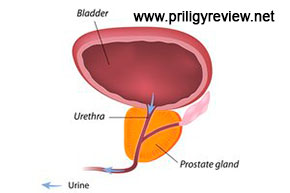Prostate Gland: Anatomy and Functions
 The prostate gland is classified as a part of the male reproductive system. Generally, the organ looks like a chestnut and is around 4 cm wide and 3 cm high, with the average weight around 20 g. It is located in the rectal area under the bladder. The urethra is tightly surrounded by the prostate gland, giving it a chance to contribute to the reproductive system of the man. The gland takes an active part in sperm formation and development. Additionally, it is responsible for the production of ejaculation liquid that is the combination of prostate fluid and sperm. Apart from the sexual role, the prostate gland is ultimately important for correct functioning of micturition system.
The prostate gland is classified as a part of the male reproductive system. Generally, the organ looks like a chestnut and is around 4 cm wide and 3 cm high, with the average weight around 20 g. It is located in the rectal area under the bladder. The urethra is tightly surrounded by the prostate gland, giving it a chance to contribute to the reproductive system of the man. The gland takes an active part in sperm formation and development. Additionally, it is responsible for the production of ejaculation liquid that is the combination of prostate fluid and sperm. Apart from the sexual role, the prostate gland is ultimately important for correct functioning of micturition system.
As for the structure of the prostate gland, medical specialists single out three main zones, including:
- Central zone, which is found around the ejaculation ducts;
- Peripheral zone, which is the biggest zone of the prostate. This area is the closest to the rectum, so it’s easy to diagnose any disorders through this area. Rectal examination gives a full picture of the zone condition;
- Transition zone is located in the center of the prostate. The main peculiarity of the area is an ability to increase, as a man ages. Thus, with time, it turns out to be the largest part of the whole prostate. Benign prostatic hyperplasia is the condition, which typically occurs in this area.
Top 3 Features and Functions of Prostate Gland
Due to the gland location in the organism, it fulfills a range of important functions. Here are the most brightly expressed and noticeable peculiarities:
- Being a gland. The most important function of the prostate is the production of alkaline seminal fluids required for ejaculation;
- Fertility. The prostate gland is exceptionally important for male fertility. It works by mixing the produced fluids with the ones from the seminal vesicles in order to transport sperm. These fluids surge to the urethra during the process of ejaculation;
- Sexual satisfaction. The prostate gland has an unexpected feature of advancing sexual pleasure and satisfaction. It is an undeniable bonus for males, so that sex is desired, triggering procreation.